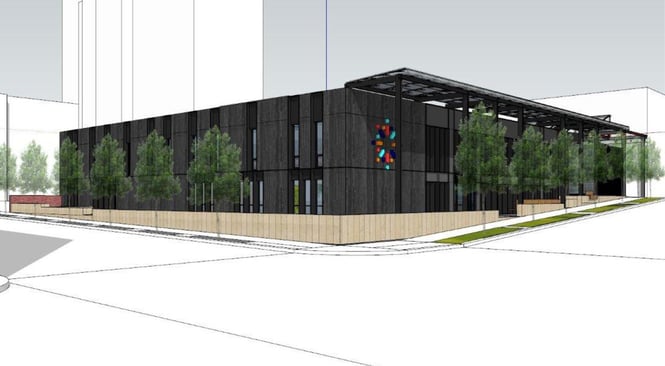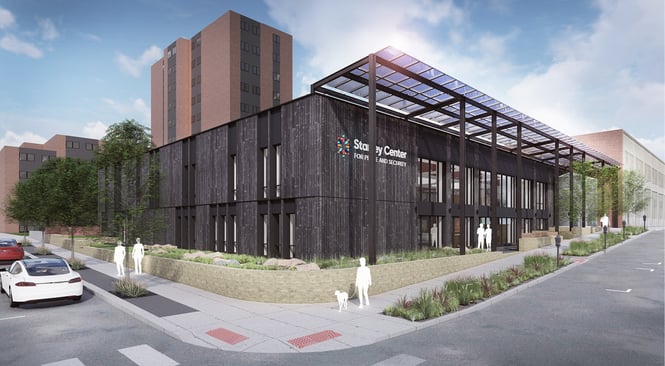Process vs. Photo-Realistic Architectural Renderings

Architectural renderings are a 3D representation of a proposed design. They can help you visualize a completed space and communicate design decisions with your stakeholders.
Once an additional service, renderings are now ingrained into the architectural process. With modeling software, you will likely see 3D representations evolve as you make design decisions.
While renderings are a normal part of the process, highly detailed, photo-realistic renderings require additional time and effort. Your architect may place photo-realistic renderings outside the scope of basic services. For clients, the difference between types of renderings can get confusing.
This article will clear up the confusion by explaining the difference between process and photo-realistic renderings. As a disclaimer, we are speaking from our experience and process. Other firms may have different guidelines for producing and charging for renderings.
Process Renderings
In the pre-digital world, all architectural drawings were done by hand. Architects sat at drafting tables, producing 2D floor plans and elevations. If a client wanted a 3D representation, the architect would sketch it on paper.
Today’s architects work in a 3D world. Modeling software is a part of the architectural process from the beginning, making 3D renders relatively straightforward.
In design meetings, your architect will likely show you rough renders of a continuously evolving model. Exterior renderings are usually more detailed than interiors. Often, interiors require a greater number of design decisions, and you may not see realistic renderings until later in the process.
Generally, the renderings you see during the design process are less detailed and realistic than higher quality, photo-realistic renderings. Since the design is a work in progress, the renderings may not be an exact representation of the final product.

A process rendering of the Stanley Center for Peace and Security.
Photo-Realistic Renderings
Photo-realistic renderings are what usually comes to mind when people think of renderings. They are highly detailed and feature accurate lighting and materials. Architects often add details like pedestrians, vehicles, and wildlife to give a sense of scale and help you visualize the activated space.
Photo-realistic renderings are produced toward the end of the design process when most decisions are set-in-stone. Due to the high level of detail, they require more time and effort than process renderings and may be charged as an additional service.
As technology advances, there are more visualization tools at an architect’s disposal, and if requested, your architect can even produce videos and Virtual Reality (VR) experiences. However, videos and VR are often beyond the scope of basic services, and you may need to adjust fees with your architect.

A photo-realistic rendering of the Stanley Center for Peace and Security.
Do You Need Photo-Realistic Renderings?
Photo-realistic renderings are an effective visualization tool, but they may be unnecessary for some projects. Although it is exciting to see a highly detailed representation, process renderings may provide enough detail for you to understand design decisions.
However, photo-realistic renderings are great for marketing and public relations. Whether you want to attract tenants or gain public support for the project, photo-realistic renderings can contribute to your marketing efforts.
Photo-realistic renderings are also an effective internal communication tool. They can help your team imagine occupying the new space and get everyone comfortable with the transition. If you want group buy-in for your project, photo-realistic renderings can help.
Learn More About Architectural Visualization Tools
Renderings are an essential part of the architectural process, but not all renderings are created equal. Although you will likely see rough process renderings throughout the design process, finalized, photo-realistic renderings may be outside the scope of basic services.
Transparent conversations about services and pricing lead to the best partnerships. Be sure to talk to your architect about your needs to determine if photo-realistic renderings make sense for your project. For public relations campaigns and internal communication, photo-realistic renderings are a worthwhile investment.
Along with renderings, your architect will use visualization tools like sketches, floor plans, and elevations to help you understand the design. Learn more by reading about the types of visualization tools you will see during the design process.